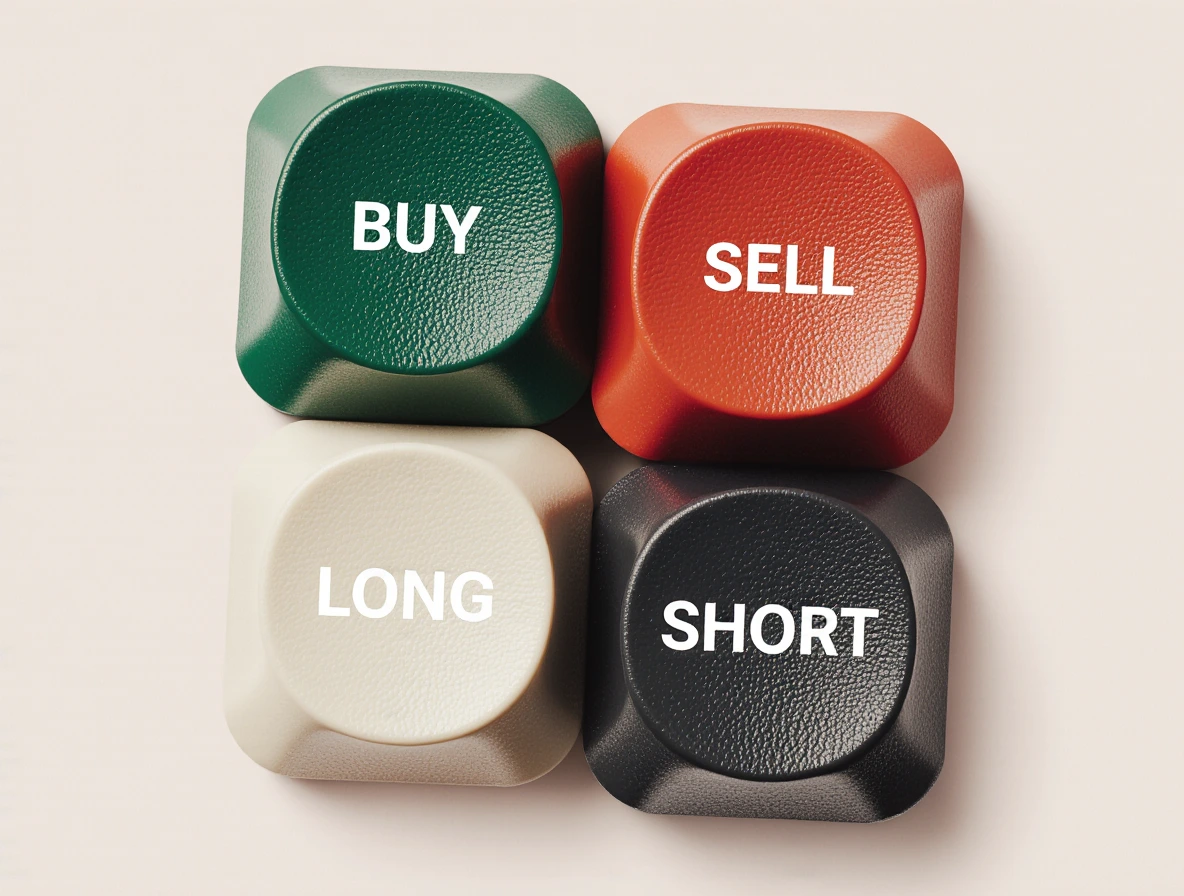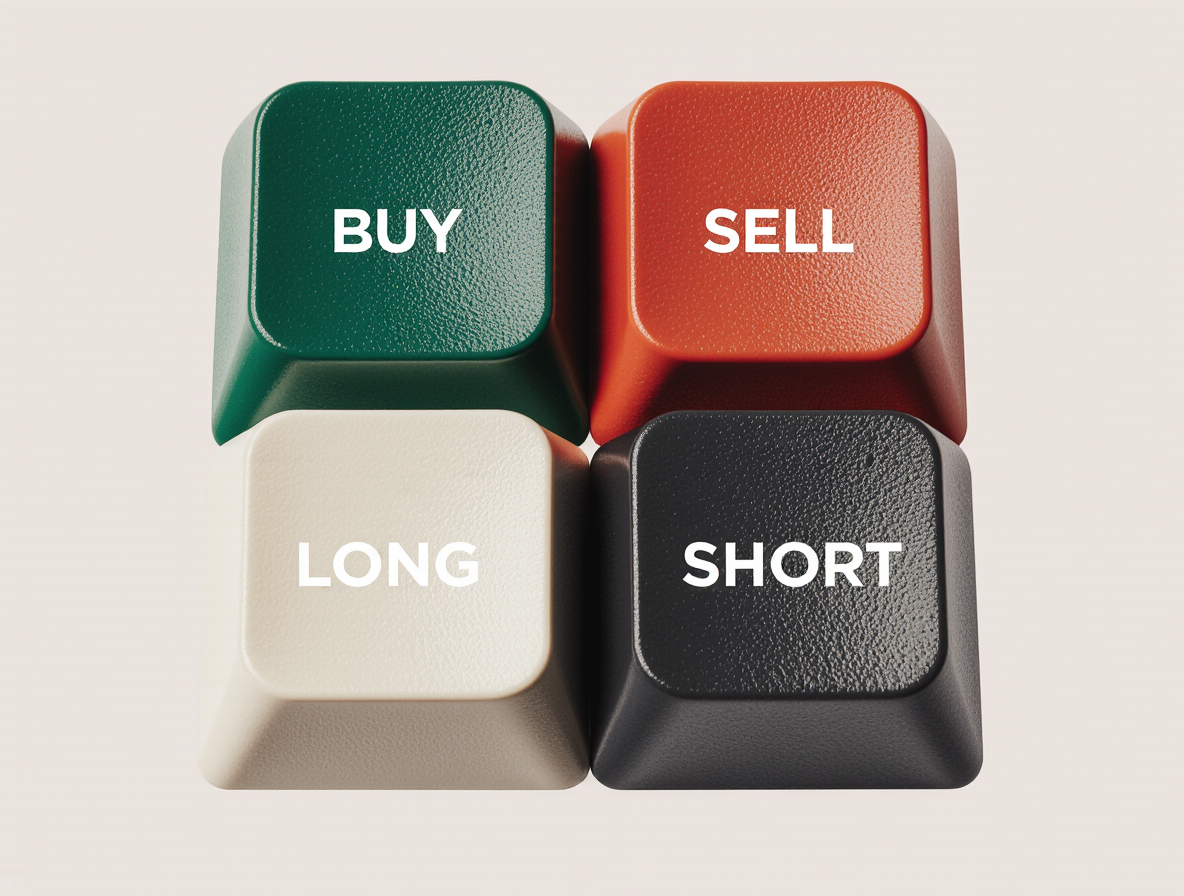
Introduction — Buy And Sell Trading In Context
Buying and selling are the everyday actions that make markets work: they match buyers and sellers, set the market price, and create opportunities for profit and risk. For traders and investors, learning how to balance long and short positions is essential — whether you trade shares, forex, indices, commodities or CFDs. This article explains core concepts, practical strategies, execution tips and risk controls so you can make informed trading decisions on your platform of choice, test ideas on a demo account, and manage the inevitable swings that come with leveraged products.
What Do “Buy” And “Sell” Mean In Trading?
Fundamentally, buying an asset involves a potential price increased as the aim; selling an asset intends to either bank the profits, or to stop any further loss. In trading, “sell” can also mean to go short – the position profits if the price of the market falls. The bid means the price buyers will pay, and ask is the price sellers will sell; the difference is the bid-ask spread – a cost which is hidden, and which makes us aware of the ongoing transaction except for other short-term traders. The process may differ depending on the vehicle you buy or sell (stocks, futures, options, CFDs) but the intention is to buy low, sell high or sell high then buy back lower.

Key Concepts In Buy And Sell Trading
Bid And Ask Prices — How They Work
The bid, or bid price, is the highest price a buyer is willing to pay at any moment, the ask (or offer) is the lowest price a seller is willing to accept. A trade occurs when a market order crosses the spread — buying the ask and the seller is receiving the bid. By observing the bid and ask levels, on your Trading View or trading platform, you’ll gain a good idea of current supply and demand and the momentum in one direction.
Bid-Ask Spread And Its Importance
The bid-ask spread is a transaction cost that can eat up your profits, especially for scalpers and high-frequency traders. Narrow spreads show good liquidity; wide spreads show low liquidity or high volatility. When the spread widens during news time or outside regular hours, short-term trades become more risky because you are now paying more to enter and exit trades.
Order Books, Liquidity And Market Depth
An order book stacks limit orders in ascending order of price. Market depth indicates where prices can be traded if the price moved a certain number of points. Thin order books allow small orders to move prices sharply and give rise to slippage, e.g. meaning if you had a lot of liquidity your orders would have almost no impact. Deep order books allow much larger trades and reduce impact. Understanding market depth can assist in knowing order types and when to utilize limit or market orders.
Order Types (Market, Limit, Stop, OCO)
Market orders execute immediately at the best sale price — fast execution could expose you to slippage. Limit orders allow you to specify a price and wait for your fills. Stop orders execute market orders at some specified level and are typically used for stop-losses or entry trigger levels for breakout trades. OCO (one cancels other) and pairs, bracketing orders, and other similar rules allow you to pre-plan entries and exits, minimizing emotional errors.
What Is A Long Position?
A long position is taken when you purchase an asset anticipating that it will appreciate. Long positions can be as simple as owning a share or through derivative leverage via CFDs and futures. Longs are long because they are appreciated. Longer exposures sometimes pay dividends too. The downside is limited to the original exposure (derivatives can be more complex). Traders & investors have long positions to stay in agreement with the trend, to buy-and-hold, or as part of a hedged portfolio.
What Is A Short Position?
A short position appreciates when the price falls. Traditionally relied on borrowing the asset, selling it, then buying it back cheaper and returning it to the lender. CFDs and derivatives offer reason to synthetically take short exposures without borrowing the underlying, however there is still financing charges, margin and counterparty risk. Shorting has special risks — an unlimited theoretical loss if the price rises, (plus possible borrowing costs — if used), and short squeezes (associated with a buying pressure forcing the position to be covered rapidly).
How To Go Long And Short Across Markets
There are several ways to express long or short views across markets: spot shares, ETFs, futures contracts, options strategies and contracts for difference (CFDs) all have different characteristics. Stocks and ETFs provide ownership of underlying companies; futures allow for standardised leverage; options provide asymmetric payoffs; CFDs provide flexible trading and have gained popularity in retail across the world as they provide access to the ability to go both long and short quickly. The decision as to which instrument to choose will depend on cost, liquidity, margin, tax treatment, and how well the product fits your strategy and tolerance for risk.
How Buyers And Sellers Affect Market Prices
Prices move as the slope of buying and selling changes. If buyers outweigh sellers, there is a tendency for market price to move upwards; if sellers outweigh buyers, there is a tendency for price to move downwards. However, it’s the order size, order flow, timing and persistence of orders that really matter — a few large buys into a thin order book can create momentum and propel price upwards quickly. A variety of factors, from institutional order flow to retail order flow saturation, news events, and macro data can upset the balance of supply and demand and give rise to abrupt moves.
Practical Buy And Sell Strategies
Trend-Following And Breakout Approaches
Trend-following strategies enter positions with the market’s momentum — breakouts above resistance or following moving-average crossovers. They can be applied to any market that shows persistent direction: forex, commodities like oil or gold, or indices. Use trailing stops to protect gains and avoid tight stops that force early exits on normal volatility.
Mean Reversion And Range Trading
Mean reversion aims to buy dips and sell rallies within a range. Traders identify support and resistance, use indicators like RSI or Bollinger Bands, and plan entries near extremes. This works best when volatility is moderate and the asset lacks strong trending bias.
Scalping And High-Frequency Execution (CFD Focus)
Scalping extracts small profits from narrow moves, relying on narrow spreads, fast execution and discipline. CFDs are common among scalpers for their flexible sizing and quick access to long/short exposure. Transaction costs, slippage and platform reliability are critical: a high spread or execution lag can turn a profitable edge into losses.
Pairs Trading And Hedged Long-Short Positions
Pairs trading takes offsetting positions in correlated instruments — long the underperformer, short the outperformer — expecting convergence. Hedged long-short strategies reduce net market exposure and isolate relative value. These approaches demand careful correlation monitoring and risk checks for divergence that can persist longer than models predict.
Risk Management When Balancing Long And Short Positions
Risk management is non-negotiable. Position sizing should be volatility-aware: risk a small percentage of capital per trade, account for margin and leverage, and plan for worst-case scenarios. Use stop-losses, diversify across instruments, and stress-test paired trades for correlation breakdown. Remember that CFDs are leveraged and can lead to rapid losses; read the risk disclosure and consider whether the product suits your objectives.
Execution And Timing — When To Buy And When To Sell
Execution quality matters: trade in high-liquidity windows (session opens, session overlaps) to reduce spread and slippage, avoid chasing price during thin hours or right before major releases, and predefine your entry, stop and target. For example, day traders often avoid holding through major economic news unless they have a clear plan. Use limit orders to capture better fills and market orders for urgent exits.
Psychology Of Buying And Selling
Emotional biases drive many holding and timing errors. Greed can keep you exposed to winners without protection; fear makes you cut winners early and hold losers. Build a trading plan with defined rules for entries and exits, maintain a trade journal, and practice discipline. Small habits — sleep, hydration, removal of distractions — help prevent impulsive decisions that cost money.
Common Mistakes And How To Avoid Them
Common pitfalls include overleveraging, ignoring spreads and fees, base-rate neglect, and poor stop placement. Avoid these by sizing based on risk (not nominal exposure), accounting for transaction costs (spreads, financing charges), and running each trade through a checklist: reason to enter, stop level, target, and worst-case loss. Use demo trading to practice strategies and platform features before committing real capital.
Real-World Examples And Mini Case Studies
Example: Long Trend in an Index — A trader spots a breakout above a prior high on an index ETF, buys with a limit order, sets a trailing stop, and scales out as the move extends. Result: profit after disciplined scaling and risk control.
Example: Short Squeeze — A short position in a low-float stock faces unexpected positive news; buying pressure forces a rapid cover, leading to large losses. Lesson: always consider liquidity and position size relative to the market.
Example: Hedged Commodity Pair — Long an undervalued oil services stock while shorting a correlated peer; the spread narrows and the hedge limits market direction risk, delivering a more stable return.
Summary — Key Takeaways For Buy And Sell Trading
- Be aware of your instruments; CFDs, futures, stocks and options are all different.
- Watch bid/ask, spread and liquidity – those factors drive your cost and execution.
- Select proper order types and position size in a way to minimize your risk of losing more than you want to afford.
- Hedge, alternate or simply create a reduced net exposure for your balanced long and short positioning.
- Have strategy and risk discipline; psychology and behaviour are equally or more important. Keep a journal and follow your risk rules.
Conclusion — Balancing Long And Short Positions Confidently
Balancing longs and shorts is a skilful process from understanding the market to strategy, then risk discipline. Whether you are using tradingview to scan for setups, using a trading strategy on a platform, or testing ideas in a demo account, the objective remains the same to make repeatable decisions that protect your capital and exploit your edge. Markets are full of uncertainty; so build systems that will withstand losing streaks and compound gains when that edge presents itself.
FAQs About Buy And Sell Trading
How Do Traders Know When To Buy Or Sell?
Traders combine technical signals, fundamental analysis, order flow and macro news to form a view. Predefined rules and a trading plan help remove emotional guesswork.
What Are The Main Risks Of Short Selling?
Main risks include unlimited loss potential, borrowing costs, short squeezes and recalls of borrowed shares. Maintaining conservative size and stop levels is crucial.
Can You Balance Long And Short Positions Simultaneously?
Yes — through hedged structures, market-neutral strategies or partial offsets. These reduce directional risk and can stabilize returns when markets move rapidly.
How Does Leverage Affect Buy And Sell Decisions?
Leverage magnifies both gains and losses. Always size positions by risk percentage, understand margin calls and financing charges, and never risk more than you can afford to lose.
What Is The Bid-Ask Spread And Why Does It Matter?
The spread is the difference between buy and sell prices — a direct cost on entry/exit. Wider spreads reduce profitability, especially for short-term trades like scalping.
Are CFDs Good For Long/Short Strategies?
CFDs enable easy long and short exposure and flexible sizing, but come with counterparty, financing and regulatory considerations. Evaluate fees, jurisdiction, and whether CFDs fit your objectives.
